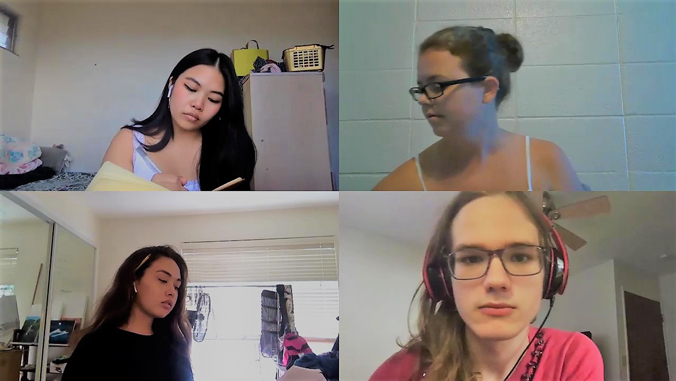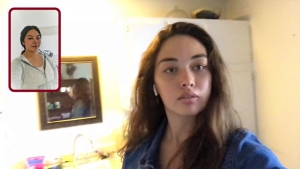
The COVID-19 pandemic has forced the first University of Hawaiʻi at Mānoa Department of Theatre and Dance fall 2020 production to go virtual.
Written by senior theatre major Alex Dekker and directed by master of fine arts in directing student Thea Wigglesworth, I’m Leaving You My Feet is about a character named Jules who experiences and processes the death of her friend. As the COVID-19 situation has forced many people to communicate through online means, Dekker and Wigglesworth have modified the plot to focus on Jules’s actions on her social media accounts and audiences will experience how her grief shifts from platform to platform.
“Because the play is largely about the grieving process, I think our artistry and thought process for this show has shifted in lieu of the fact that its content is now, unfortunately, eminently relevant to so many people,” Dekker said. “But the switch to digital theatre also has a pretty significant effect on the overall character of the play, and it let us explore the ways in which people seek digital intimacy in a quarantined world, which I find pretty exciting.”
I’m Leaving You My Feet, the 2020–21 season opener of Late Night Theatre, a student-run theatre company, will be presented September 25–27 at 7:30 p.m. Runtime is 75 minutes with no intermission. Tickets range from $5–$10 and can be purchased online.
New theatrical concept

Crew members include Dekker, Wigglesworth, actresses Victoria Kashiwai and Ocean Rea and lighting designer Rachel Sorensen. They emphasized the need to shift its planning and vision since the production was originally scheduled to be held in-person in the Earle Ernst Lab Theatre. Part of the shift was the creation of a “play within a play,” because although the audience will experience Jules’s journey, the crew is also encouraging viewers to share and comment via their own personal social media channels.
“We hope through comments you find others watching and interacting with not only the material provided but also your fellow viewers/responders,” Wigglesworth said. “We tried to ensure that only the end feels like the end and every other scene contains unanswered questions. At the end of the day this is truly an experiment, theatrically, socially and artistically, and I think we really enjoyed the process.”
Dekker and Wigglesworth added that the crew learned how to utilize social media platforms to tell a story.
“Some were easy, Instagram for example,” Wigglesworth said. “Lots of theatre makers are using it to disseminate ideas, teach classes, etc. But TikTok and Snapchat? Short videos, lots of filters, how do we use those to serve the story? I feel like I am really starting to get a handle on the possibilities of social media, but only time will really tell how successful we are.”
“It is at once kind of overwhelming in terms of the ways we’re trying to distort these tools’ original purposes and conventions and so rewarding in that I feel the product is so uniquely suited for the time we’re living in,” Dekker said.
—By Marc Arakaki

